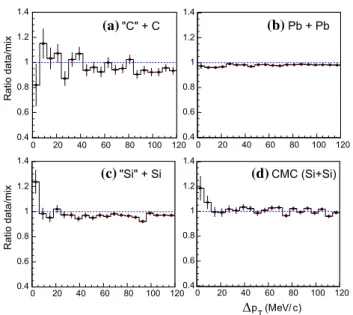Critical fluctuations of the proton density in A+A collisions at 158A GeV
Texte intégral
Figure




Documents relatifs
The method has been tested using events generated in the Cugnon cascade model C121, and has been found to reproduce well the results from the known direction of the reaction plane.
We report in this letter the first experimental evidence that close to the critical point of a second or- der phase transition, the PDF of a spatially averaged order parameter takes
The initial condition is the following: at time zero, each site in x ∈ Z bears a random number of particles whose distribution is Poisson with parameter ρ > 0, the.. Key words
On the transverse momentum distribution of strange hadrons produced in relativistic heavy ion collisions..
Finally, we acknowledge the enduring support for the construction and operation of the LHC and the CMS detector provided by the following funding agencies: the Austrian Federal
Figure 4.9: Realistic packet ordering - Comparison of the distribution of packet sizes (a, b, c), the number of packets per bidirectional flow (d, e, f), the number of bytes
If the atomic relaxation rate is fast compared to the Larmor frequency, then the nucleus cannot respond to the individual fields H, 0, and -H, and all nuclei experience the
L’archive ouverte pluridisciplinaire HAL, est destinée au dépôt et à la diffusion de documents scientifiques de niveau recherche, publiés ou non, émanant des